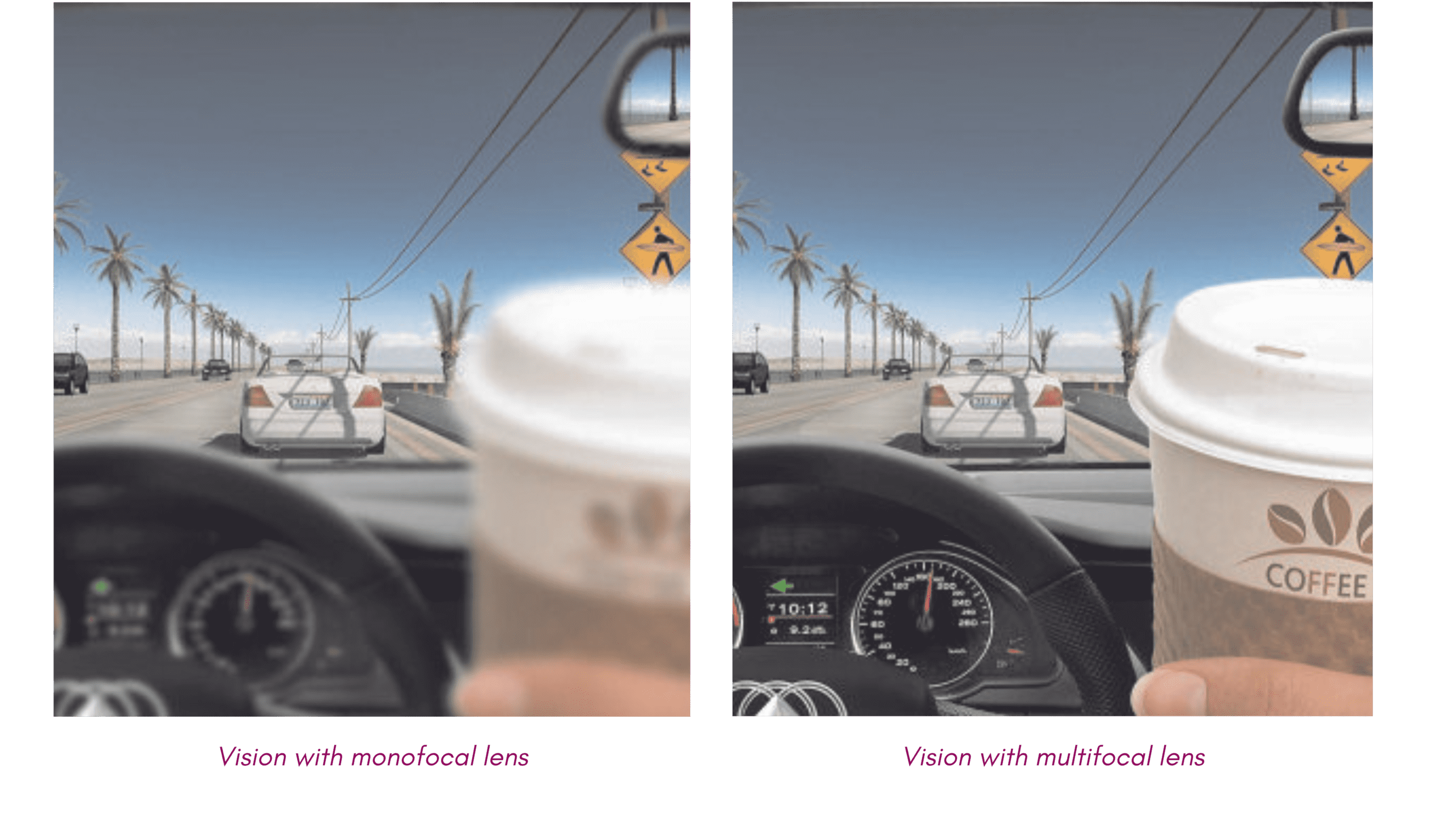- Normal lens is clear and transparent
- Light rays easily pass through it
- When lens becomes cloudy, light rays are blocked
- Over a period of time, vision becomes more dull
- If untreated, eventually there is a complete loss of vision
- Blurred vision-slow, painless and progressive
- Vision similar to seeing through a frosted/fogged glass
- Images-blurry, yellow, double or multiple
- Glare and halos especially at night
- Frequent change in glasses
- Eye strain and headache not correctable by glasses
- Blurred vision-slow, painless and progressive
- Vision similar to seeing through a frosted/fogged glass
- Images-blurry, yellow, double or multiple
- Glare and halos especially at night
- Frequent change in glasses
- Eye strain and headache not correctable by glasses
- No
- Patient may develop cloudy vision months or years later due to PCO (Posterior Capsular Opacification)
- PCO is treated with YAG laser in OPD with vision recovery within a few hours
- Old concept Cataract has to be mature or ripe to be removed
- Present concept-any cataract which hinders day to day activity of the patient, should be removed
- Cataract surgery is a surgery of convenience to enjoy life to the fullest
- If untreated, vision becomes so blurred that patients can not perform even daily routine tasks
- Rarely, cataract may become hyper mature (overripe) & burst and can lead to complications like Glaucoma leading to permanent vision loss.
- Special advanced Laser machine called Femtosecond Laser
- It prepares the Cataract with precise Capsular opening, accurate cuts in the Cataract and corneal Incisions
- Makes surgery precise, easy and safe
- Cataract can be easily Emulsified by phaco machine
- Common – Ageing or degeneration and Ultraviolet rays exposure
- Other – Diabetes, Eye Injury, medication like steroids, infection or inflammation
- Images-blurry, yellow, double or multiple
- Rarely-congenital (since birth)
- Tiny 2.2 mm micro Incision
- Ultrasonic energy
- Minimal or No Anesthesia
- Vision recovers within a few hours
- Rapid recovery within 48-72 hours for professional work
- Resume work within 2-3 days
- One of the safest surgery performed world over
- Complications are rare, minor and temporary like burning, watering, corneal haze, itching, lid swelling and drooping, floaters, glare and halos
- All the above are temporary and recover with healing & medications
- Serious complications like infection, Inflammation, nucleus drop and retina detachment are extremely rare with modern Micro Surgery
- Natural lens has to be replaced by IOL
- Different types of IOLs are – Non-Foldable. Foldable, Hydrophilic, Hydrophobic, Aspheric, Monofocal, EDOF, Trifocal and Toric
- Foldable IOLs go through incision of 2.2-2.8 mm
- No stitches are required
- Faster healing, less chances of Infection and astigmatism
- Enhanced quality of vision – High contrast/HD vision
- Conventional spherical IOLs less sharp image akin to vision of an older person
- Aspheric IOLS-Improves image quality, contrast and brightness
- Aberration free and wavefront design-improves low light or night vision
- Faster reaction time useful for night driving
- Improved depth perception with negatively aberrated lenses
- Conventional spherical IOLs less sharp image akin to vision of an older person
- Aspheric IOLS-Improves image quality, contrast and brightness
- Aberration free and wavefront design-improves low light or night vision
- Faster reaction time useful for night driving
- Improved depth perception with negatively aberrated lenses
- Sphericaleye-shaped like a ball
- Cylindrical/Astigmatism shaped like an egg. Light passes through it and does not focus sharply on retina leading to blurred image
- Toric IOLs correct astigmatism and decrease dependence on glasses
- Monofocal IOLs provide good distance vision but patient will need reading glasses
- Multifocal IOLS provide full range of vision from distance to near
- Patient may note night glare or halos initially after surgery which lessen after a few weeks
- Spectacle free vision
- Latest Trifocal IOLs allow patient to effortlessly switch between reading, Intermediate and long distance
- Required for digital devices like computers
- Reduced incidence of glare and halos as compared to Multifocal lenses
- Multifocal and Trifocal IOLs are contraindicated in patients with underlying Retina or Cornea pathology
- Latest Trifocal IOLs allow patient to effortlessly switch between reading, Intermediate and long distance
- Required for digital devices like computers
- Reduced incidence of glare and halos as compared to Multifocal lenses
- Multifocal and Trifocal IOLs are contraindicated in patients with underlying Retina or Cornea pathology
- Two technological advancements
-Elongating focus of eye -Correction of chromatic aberrations (colour distortion)
- Provide sharp vision in all lighting conditions
- Almost no glare or halos
- Excellent distance and intermediate vision especially required for computer use
- Patient may need a small reading number to read extremely fine prints
- Micro Incision IOLS Go through 1.8mm incision
- Accommodative IOLs uses patent’s own accommodation to give range of vision
- Heparin and Ozone modified IOLs to reduce chances of inflammation and PCO (Posterior Capsular Opacification)













































